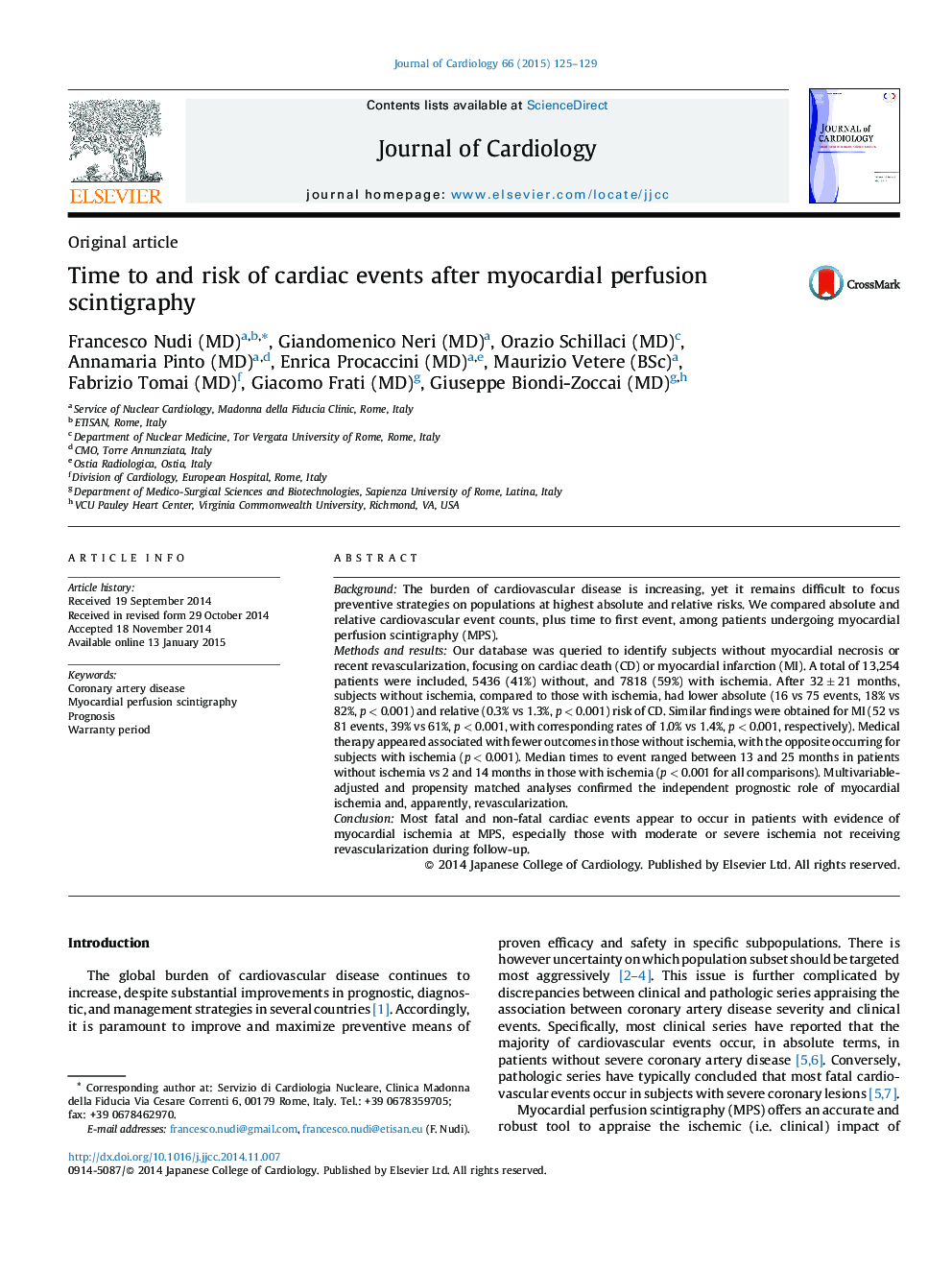| Article ID | Journal | Published Year | Pages | File Type |
|---|---|---|---|---|
| 2962943 | Journal of Cardiology | 2015 | 5 Pages |
BackgroundThe burden of cardiovascular disease is increasing, yet it remains difficult to focus preventive strategies on populations at highest absolute and relative risks. We compared absolute and relative cardiovascular event counts, plus time to first event, among patients undergoing myocardial perfusion scintigraphy (MPS).Methods and resultsOur database was queried to identify subjects without myocardial necrosis or recent revascularization, focusing on cardiac death (CD) or myocardial infarction (MI). A total of 13,254 patients were included, 5436 (41%) without, and 7818 (59%) with ischemia. After 32 ± 21 months, subjects without ischemia, compared to those with ischemia, had lower absolute (16 vs 75 events, 18% vs 82%, p < 0.001) and relative (0.3% vs 1.3%, p < 0.001) risk of CD. Similar findings were obtained for MI (52 vs 81 events, 39% vs 61%, p < 0.001, with corresponding rates of 1.0% vs 1.4%, p < 0.001, respectively). Medical therapy appeared associated with fewer outcomes in those without ischemia, with the opposite occurring for subjects with ischemia (p < 0.001). Median times to event ranged between 13 and 25 months in patients without ischemia vs 2 and 14 months in those with ischemia (p < 0.001 for all comparisons). Multivariable-adjusted and propensity matched analyses confirmed the independent prognostic role of myocardial ischemia and, apparently, revascularization.ConclusionMost fatal and non-fatal cardiac events appear to occur in patients with evidence of myocardial ischemia at MPS, especially those with moderate or severe ischemia not receiving revascularization during follow-up.
